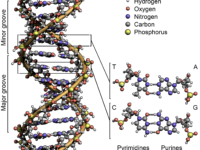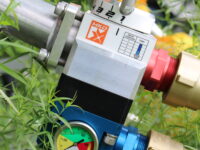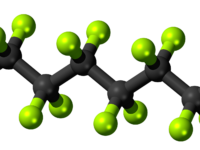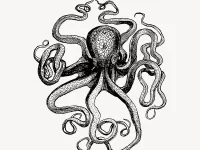A simple dog walk is an odyssey of olfactory exploration. As they venture outdoors, dogs eagerly dart around to investigate various scents — poop, carcasses, and fire hydrants are like neon beacons to them. While humans have a decent sense of smell, dogs reign supreme in the olfactory realm. This difference is rooted in biology. When a dog sniffs, some of the inhaled air enters a complex labyrinth lined with a sticky sheet called the olfactory epithelium, where smells are initially detected.
Humans share similar olfactory mechanisms, but dogs have more of everything: a larger olfactory epithelium, dozens of times more neurons in that epithelium, and nearly twice as many types of olfactory receptors. In the end, a dog’s nose is 10,000 to 100,000 times more sensitive than ours. This heightened olfactory ability makes dogs invaluable for various scent-related tasks, including detecting bombs, drugs, and even diseases. Recent studies have shown that dogs can identify diseases like COVID-19 and prostate cancer with over 96% accuracy. However, the precise mechanism behind their olfactory prowess remains a mystery. What combination of compounds are they smelling that signals the presence of a disease? Can we replicate their sensitivity using chemical techniques? A recent multinational study conducted by researchers from Johns Hopkins University, MIT, and Medical Detection Dogs in the United Kingdom attempted to answer these questions using chemical analysis and artificial intelligence (AI).
Initially, the research team trained two dogs to detect the presence of prostate cancer in urine samples with an accuracy of 76%. The researchers then examined two components of the samples: the distribution of volatile organic compounds and the microbial profile. Manual analysis of these quantities failed to yield a definitive master biomarker template, a series of molecular concentrations in urine that would yield a positive cancer diagnosis. Consequently, the researchers turned to AI as a research tool to “sniff out” connections that eluded human observation.
“Consequently, the researchers turned to AI as a research tool to “sniff out” connections that eluded human observation.”
Rather than attempting to predict whether an individual had prostate cancer, the researchers employed an artificial neural network (ANN) to predict whether a dog would categorize that person as positive or negative. They trained the ANN using the chemical and biological samples that the dogs had diagnosed as cancerous, creating a model that represented the characteristics the dogs sought in the samples.
AI is often portrayed as a statistical “black box,” where the inner workings are inscrutable and the method it uses to generate results remains unknown. However, imagine being able to visualize a model and navigate through it to identify the most crucial connections. Network skeletonization facilitates precisely that; unimportant nodes are pruned from the model, revealing the critical factors influencing the output. The researchers were then able to identify intervals and peaks in the volatile compound graphs that were essential for canine diagnosis.
This discovery was corroborated by auto-associative filtering, which functions as a generative AI network that produces canine-negative profiles. The network establishes a model of normalcy, which is compared with sample inputs to uncover anomalies. The AI can then pinpoint key data features and patterns associated with the dogs’ diagnoses. In particular, a combination of unusually abundant bacteria, alloscardovia omnicolens and dolosigranulum pigrum, were closely linked to a positive canine diagnosis.
“Our four-legged companions are, in essence, scent-sensing supercomputers.”
The natural world harbors a wealth of algorithms and sensors hidden right under our noses. Our four-legged companions are, in essence, scent-sensing supercomputers. Octopi exhibit remarkable biological prowess, and mantis shrimps are formidable undersea fighters. The emergence of AI research heralds a new era of understanding these creatures and their extraordinary abilities. So, the next time your dog dashes off to investigate another dog’s behind, there may be more to this simple act than meets the eye.






